Ceramist Alejandra Almuelle conceives of the body as neither positive nor negative; it’s everything.

By Fiza Kuzhiyil, Photos courtesy of Alejandra Almuelle
Alejandra Almuelle moves through her home like a mad scientist who just found the formula for the perfect potion. In true artist form, she runs to find a sculpture to show exactly how she feels about every question I ask her.
“Let me show you something,” she says as she leads me to her studio, “because this is freaking interesting.” She’s as giddy as a kid during show and tell.
Austin-based artist Alejandra Almuelle creates collections of ceramics, each with different interpretations of the human body. In her studio, large ceramic sculptures sit on desk tops, while smaller ceramics clutter her windowsill and various shelves. On every possible surface, she displays art.
Born and raised in Peru, a country with an abundance of clay, Almuelle comes from a place where people use ceramics as their main medium of artistic expression. She even spent time in the Sacred Valley of Cuzco, a hub for ceramics. Drawing from these roots, Almuelle knew she wanted to study ceramics when she moved to the U.S. in 1988.
Inside and Outside
Molding slabs of clay into human forms feels almost intuitive to her. Especially when creating hollow heads, a consistent figure in most of her sculptures, she says the slabs allow for easy manipulation.
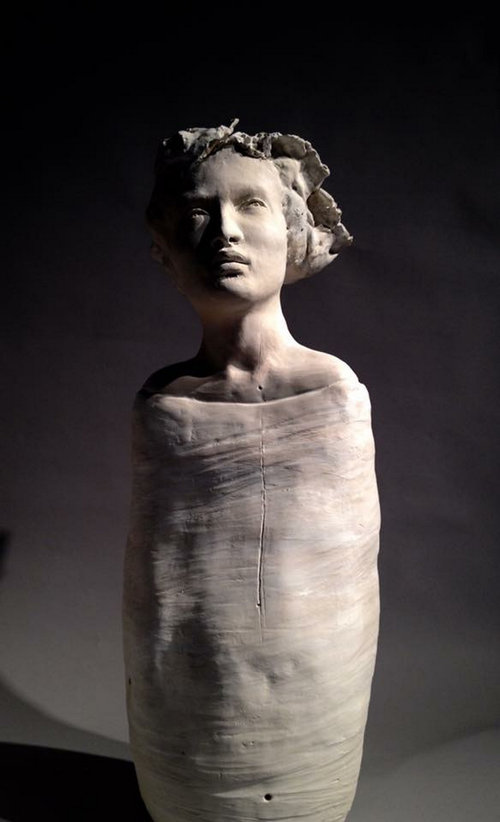
Seven 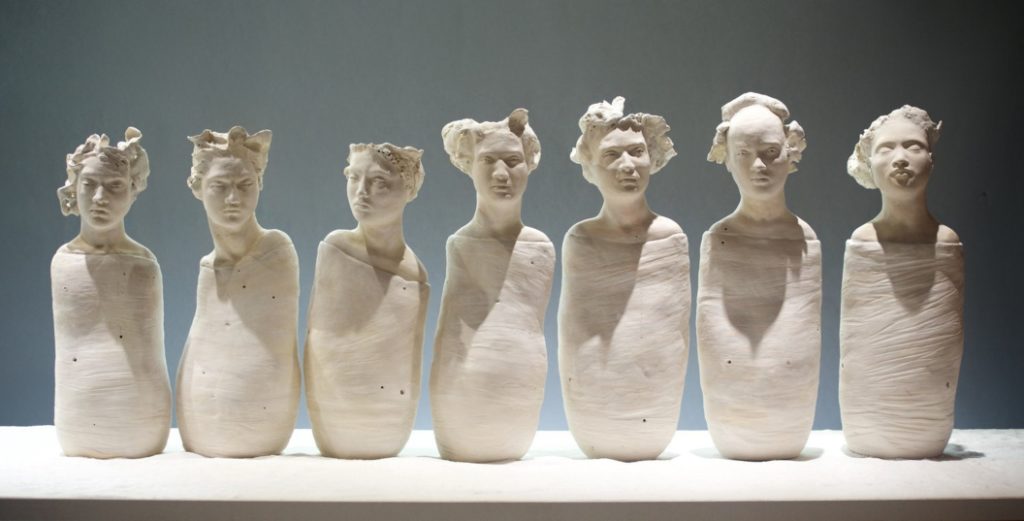
Seven
“For the heads, you can work from the inside and the outside. So it’s not a solid piece of clay that you are [forming]from the outside,” Almuelle says. “The beauty of the slab is you can push and pull, push and pull, push and pull—play from the inside and outside at the same time.”
It typically takes her three months to finish a collection, but they sit on her table for weeks after so she can fix little things. She tweaks her pieces as she goes, so from beginning to end, the process of creating a collection takes around five months.
After their creation, installing the pieces in a gallery can be its own challenge. As she created her Being series during the pandemic, she hung her sculptures on a wall, but one porcelain sculpture in particular didn’t sit right with her. She couldn’t pinpoint exactly what felt wrong, but she got the idea to flip the sculpture upside down. When she returned to the studio the next day, seeing the piece upside down, she realized it looked like a tarot card of an upside-down man—a card she interprets as a sign to step away from society.
Finding Peace
Indeed, Almuelle used this quarantine period of the pandemic to step away from social obligations and find peace in working at the studio without feeling like she would miss out on other social obligations.
“Most of the time, [when]I’m working at the studio, somebody has an opening, somebody has a party, something else is happening constantly, so I always feel like if I decided to be in the studio, I am missing life,” Almuelle says. “When I was working on that piece, nobody was doing anything, and I was not missing anything. I was feeling like, ‘Oh my god, I can just be there fully.’”
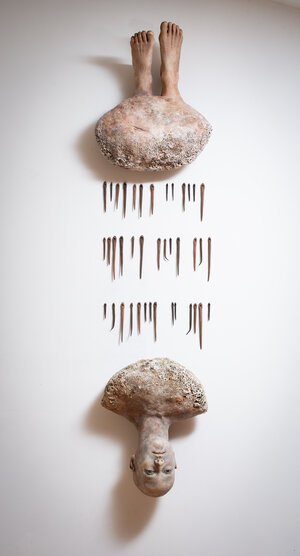
The Body is a Place
As local galleries start up again, Almuelle debuts new pieces, including those in her series The Body Is A Place, which showcases the human body through her style of ceramics. Still, she explains her creating art about the human body isn’t an act of “body positivity.” Rather, she doesn’t interpret the body as either positive or negative.
“So ‘positive’ or ‘not positive,’ I wouldn’t call it that. I will call it a reality,” Almuelle says. “A very political and social and spiritual reality. A tangible reality, basically, of what is the spirit, of what are politics and values.”
Though she doesn’t assign inherent positivity or negativity to the human body, Almuelle says society often politicizes the body. Through The Body Is a Place, she hopes to convey that a body doesn’t just serve as a tangible vessel for a person—it carries culture and imagination.
“By logic, [your body]belongs to you,” Almuelle says. “There’s a lot of social, political and religious constructs that define your body for you…and [the body]is not just the tangible part of the self; it’s everything. It carries the seed of the culture, and it carries the imagination of the soul.”
For Almuelle, art is more than a job. Her work is her teacher—teaching Almuelle about herself by pointing out consistencies in her work. Reflecting on her time in the studio, she realizes the time she spends sculpting clay and the art she creates reflect part of who she is. After all, an artist’s work is uniquely theirs, so they can look at their art to learn what makes them unique.
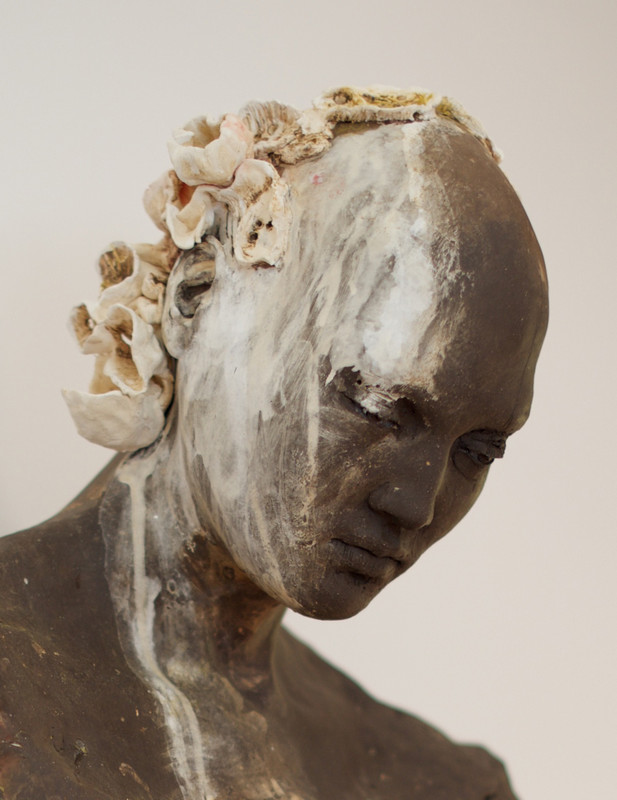
Tierra 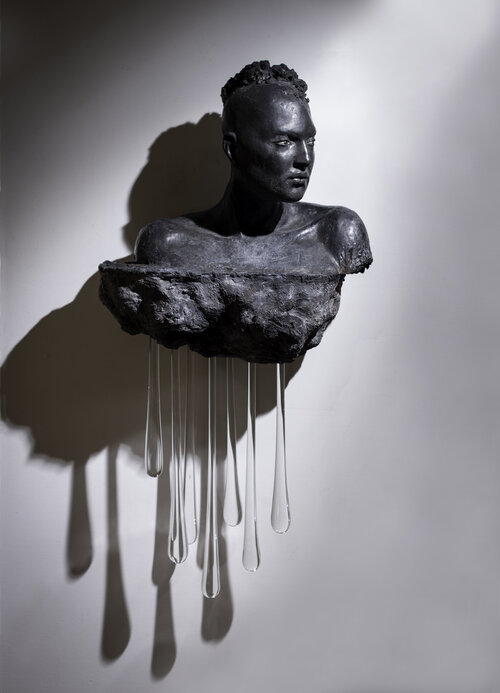
Being 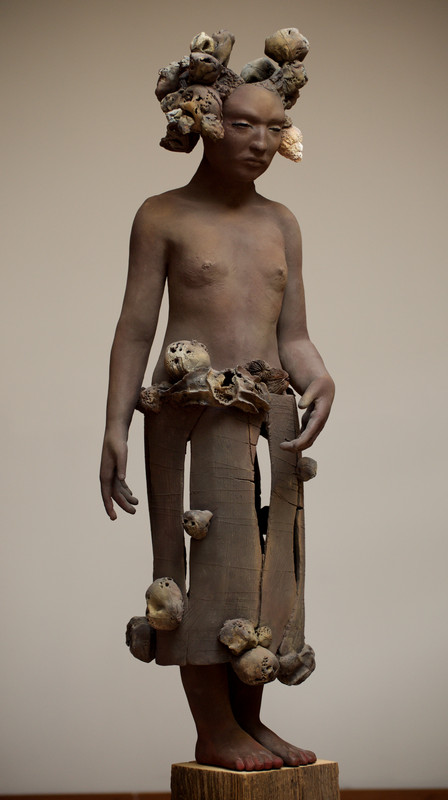
Locus 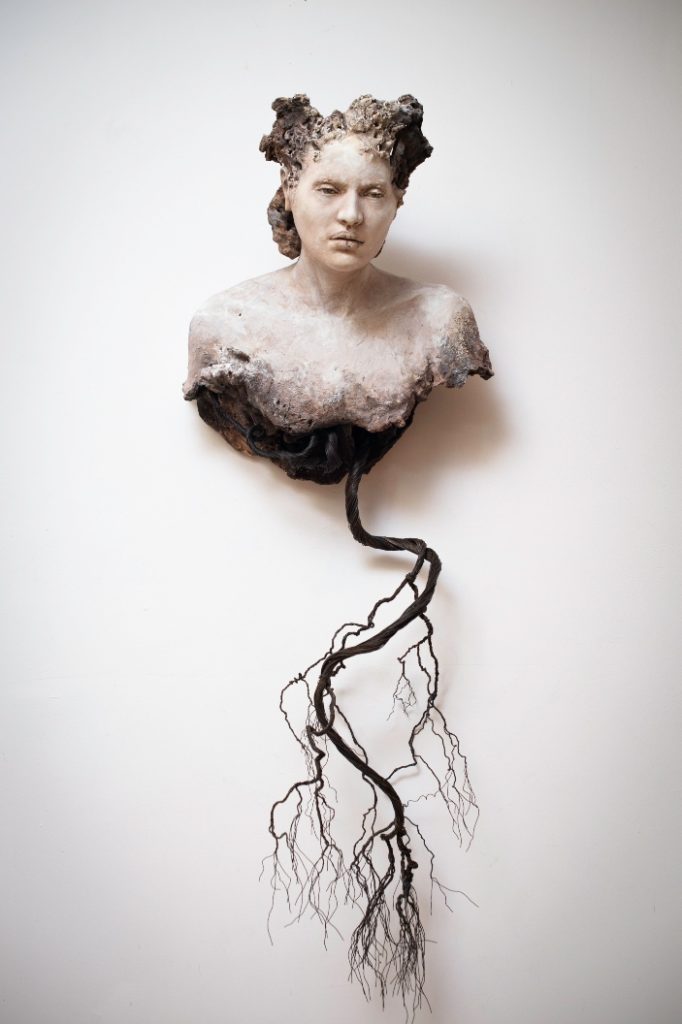
Being
“I’ve learned things that, later on, I read in books, just by being in the studio,” Almuelle says. “If we pay attention to how we move through the world, we are our own teachers through the work that we make, through the work that we do, because we have spent hours and hours doing something. It’s more than making and leaving. It’s more. It carries our essence as humans.”

